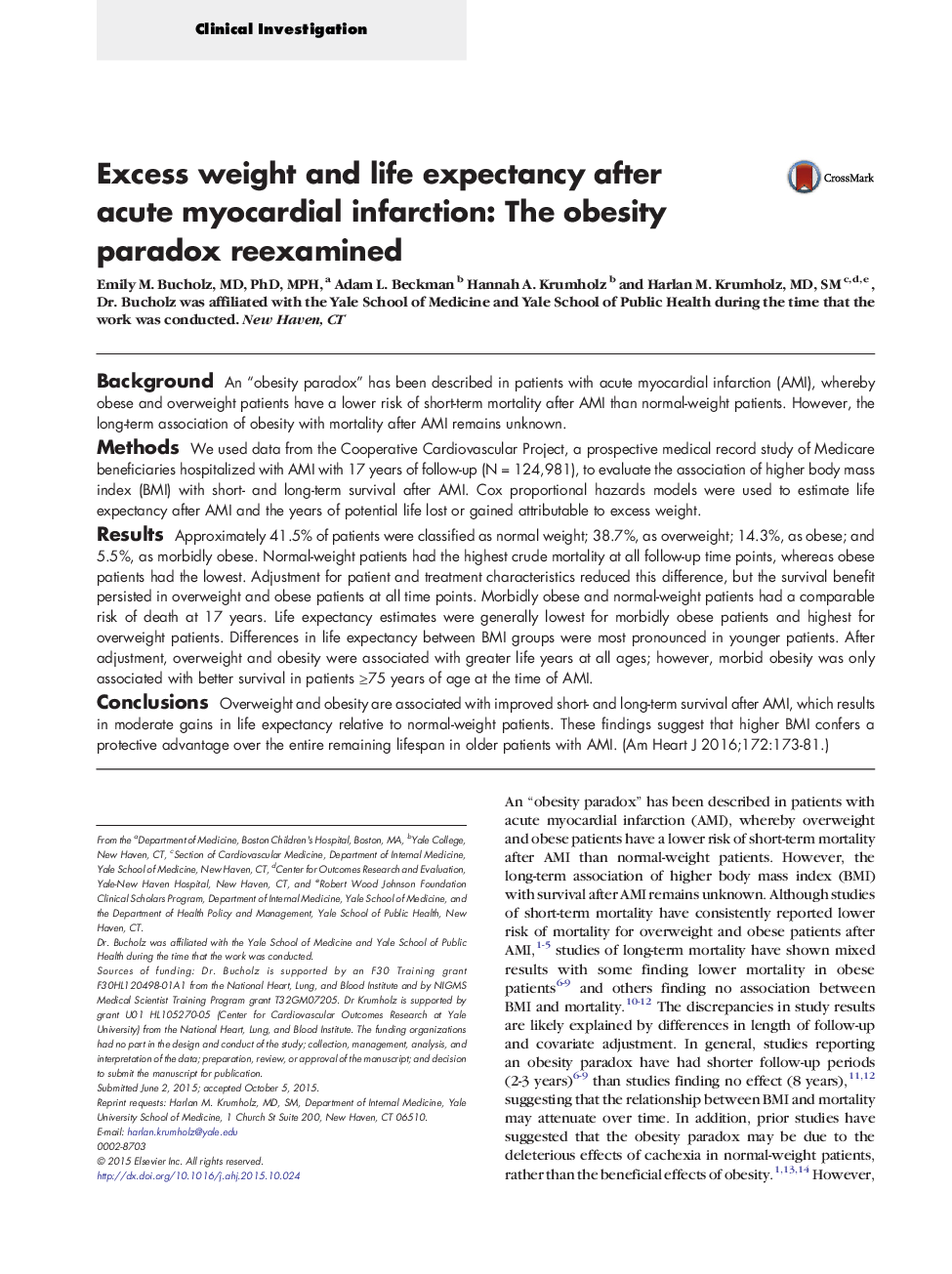| کد مقاله | کد نشریه | سال انتشار | مقاله انگلیسی | نسخه تمام متن |
|---|---|---|---|---|
| 5928007 | 1571443 | 2016 | 9 صفحه PDF | دانلود رایگان |
BackgroundAn “obesity paradox” has been described in patients with acute myocardial infarction (AMI), whereby obese and overweight patients have a lower risk of short-term mortality after AMI than normal-weight patients. However, the long-term association of obesity with mortality after AMI remains unknown.MethodsWe used data from the Cooperative Cardiovascular Project, a prospective medical record study of Medicare beneficiaries hospitalized with AMI with 17 years of follow-up (N = 124,981), to evaluate the association of higher body mass index (BMI) with short- and long-term survival after AMI. Cox proportional hazards models were used to estimate life expectancy after AMI and the years of potential life lost or gained attributable to excess weight.ResultsApproximately 41.5% of patients were classified as normal weight; 38.7%, as overweight; 14.3%, as obese; and 5.5%, as morbidly obese. Normal-weight patients had the highest crude mortality at all follow-up time points, whereas obese patients had the lowest. Adjustment for patient and treatment characteristics reduced this difference, but the survival benefit persisted in overweight and obese patients at all time points. Morbidly obese and normal-weight patients had a comparable risk of death at 17 years. Life expectancy estimates were generally lowest for morbidly obese patients and highest for overweight patients. Differences in life expectancy between BMI groups were most pronounced in younger patients. After adjustment, overweight and obesity were associated with greater life years at all ages; however, morbid obesity was only associated with better survival in patients â¥75 years of age at the time of AMI.ConclusionsOverweight and obesity are associated with improved short- and long-term survival after AMI, which results in moderate gains in life expectancy relative to normal-weight patients. These findings suggest that higher BMI confers a protective advantage over the entire remaining lifespan in older patients with AMI.
Journal: American Heart Journal - Volume 172, February 2016, Pages 173-181
